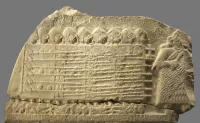The American Conference of Governmental Industrial Hygienists (ACGIH) is a professional association based in Cincinnati, Ohio. Its primary goal is to promote worker protection by offering objective, scientific data to occupational and environmental health experts. ACGIH focuses on advancing industrial hygiene practices and provides resources for professionals in related fields, contributing to the improvement of workplace safety and health standards.
June 27, 1938: NCGIH Convened
On June 27, 1938, the National Conference of Governmental Industrial Hygienists (NCGIH) convened in Washington, D.C. The original constitution limited full membership to two representatives from each governmental industrial hygiene agency. Associate membership was available to other professional personnel, and affiliated membership to governmental industrial hygiene personnel of other countries.
1941: TLV-CS Committee Established
In 1941, the Threshold Limit Values for Chemical Substances (TLV-CS) Committee was established to investigate, recommend, and annually review exposure limits for chemical substances.
1944: Conference Membership Peak
In 1944, the Conference membership peaked at 281 individuals.
1944: TLV-CS Committee Becomes a Standing Committee
In 1944, the Threshold Limit Values for Chemical Substances (TLV-CS) Committee became a standing committee.
1946: Conference Membership Declined
In 1946, the Conference membership declined to 235 as many individuals were leaving governmental employment after World War II. This transition to a peacetime economy required the Conference to revise its constitution and make major changes to its organizational structure.
1946: Constitution Revisions and Name Change
In 1946, the constitution was revised, abandoning the concept of limiting full membership to only two individuals from each governmental industrial hygiene agency and granting full membership to governmental industrial hygiene personnel from foreign countries. The organization also changed its name to the American Conference of Governmental Industrial Hygienists (ACGIH) in 1946.
1956: Introduction of the Term "Threshold Limit Values (TLV)"
The term "Threshold Limit Values (TLV)" was introduced in 1956.
1960: Membership Growth
By 1960, ACGIH membership had grown to 511 members, including 54 from other countries.
1962: First TLVs and BEIs Book Published
The first list of Threshold Limit Values and Biological Exposure Indices (the TLVs and BEIs book) was published in 1962.
1977: Membership Growth
By 1977, ACGIH membership had reached 1,800, with 166 members from outside the United States.
1986: Applied Industrial Hygiene Journal
In 1986, ACGIH published Applied Industrial Hygiene journal.
1989: Applied Industrial Hygiene Journal
In 1989, the Applied Industrial Hygiene journal was published.
1990: Applied Occupational and Environmental Hygiene Journal
In 1990, the Applied Occupational and Environmental Hygiene journal was published.
2003: Applied Occupational and Environmental Hygiene Journal
In 2003, the Applied Occupational and Environmental Hygiene journal was published until ACGIH and AIHA began publishing a joint journal.
2003: Worldwide Outreach Program Established
In 2003, the YIHWAG Family Foundation awarded FOHS a substantial grant, leading to the establishment of the Worldwide Outreach Program to support occupational health and safety in developing countries.
2006: World Health Organization Collaborating Centers Work Plan
In 2006, the World Health Organization Collaborating Centers for Occupational Health’s 2006-2010 Work Plan was mentioned. Qualifying organizations can apply for program grants ranging from $1,000 - $2,000.
2008: Sustainable TLV/BEI Fund Created
In 2008, FOHS created the Sustainable TLV/BEI Fund to ensure the continued existence of ACGIH® TLVs and BEIs.
2010: World Health Organization Collaborating Centers Work Plan
In 2010, the World Health Organization Collaborating Centers for Occupational Health’s 2006-2010 Work Plan was mentioned. Qualifying organizations can apply for program grants ranging from $1,000 - $2,000.
2016: Scientific Information Dissemination
In 2016, scientific information was provided to members and others in the industry through journals, conferences, seminars, and publications, including the TLVs and BEIs book.
Mentioned in this timeline
The United States of America is a federal republic located...

Washington D C is the capital city and federal district...
World War II - was a global conflict between the...

The World Health Organization WHO is a specialized agency of...

Books are a means of storing information as text or...

War is defined as an armed conflict involving the organized...
Trending
6 months ago Taylor Ward's grand slam fuels Angels' victory, extending their winning streak to seven games.

7 months ago Robert Irwin's Viral Photos Attract Attention; Terri Irwin Reacts to Son's Shoot

5 months ago Lauren Alaina Celebrates New Baby With Husband Cam Arnold, Drops Surprise Song

7 months ago Russell Dickerson extends RUSSELLMANIA tour after success of "Happen To Me", toddler sleeps on hit.

48 minutes ago Connor Bedard's Speed and Skill Drive Blackhawks' Success with Key Goals and Wins

20 hours ago Emily Blunt Shines in Ruffled Ralph Lauren at ELLE Women in Hollywood Event
Popular

XXXTentacion born Jahseh Dwayne Ricardo Onfroy was a controversial yet...

Cristiano Ronaldo often nicknamed CR is a Portuguese professional footballer...

Candace Owens is an American conservative political commentator and author...

William Franklin Graham III commonly known as Franklin Graham is...

Bill Clinton the nd U S President - served as...

Vivienne Westwood was a highly influential English fashion designer and...